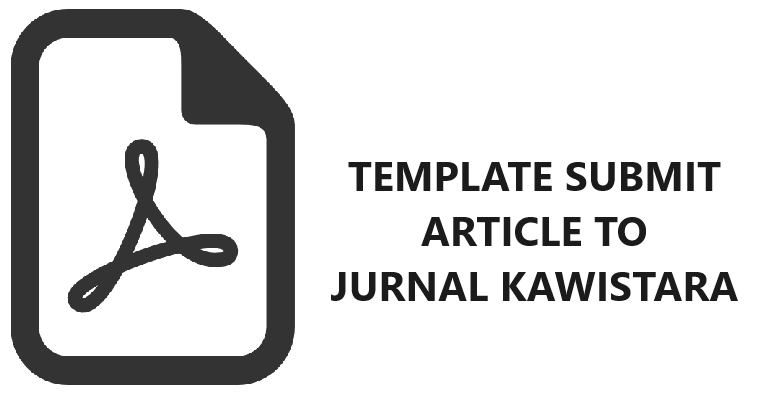Rekayasa Bahasa dan Konstruksi Politik “Persatuan-Kesatuan” dalam Wacana “Negara Kesatuan Republik Indonesia”
Agus Suwignyo(1*)
(1) Department of History, Universitas Gadjah Mada
(*) Corresponding Author
Abstract
The formation of the Indonesian nation-state is inseparable from linguistic engineering. This includes phrases that transformed their lexical meaning to become a binding political concession produced by Indonesian political leaders in the 1940s and 1950s. The official name of the Indonesian state “The Unitary State of the Republic of Indonesia” is the result of this political concession in the statecraft of Indonesia. This article aims to examine the meanings of the “unity and unitary” phrases in the imagined form of Indonesian nation-state. Why was “unity and unitary” an effective political tool for the shaping of the imagination of “Indonesia”? Linguists and historians would these choices of words as a reflection of the power of language in the creation of facts. Language can transform a lexical fact into a material one. It is therefore essential to understand how did the phrase “unity and unitary” transform from a lexical to a political meaning in the context of Indonesian history? This article is based on literary analyses of official relevant documents, including the assembly proceeding of the Council for the Investigation of the Preparation for Indonesian Independence (Badan Penyelidik Usaha-usaha Persiapan Kemerdekaan Indonesia, BPUPKI) of August 1945, and the so-called Principal Guidelines for State Development (Garis-Garis Besar Haluan Negara, GBHN) of the New Order. It argues that the “unity and unitary” phrase represents a negotiation of diverse political elements which then shaped the crafting of Indonesian nation-state. The changes in the contexts in which the phrase was used show a changing association between the lexical and ideological meanings of the phrase. While these changes worked towards institutionalizing the Indonesian state, this article concludes that they also submerged the people’s discontents. The phrase “unity and unitary” reflected the making of people’s uniformity to a large extent.
Keywords
Full Text:
PDFReferences
Anderson, Benedict R.O.G. 1991. Imagined communities: Reflections on the origin and spread of nationalism. London: Verso.
Aspinal, Edward and Mark T. Berger. 2001. The break-up of Indonesia? Nationalism after decolonization and the limits of nation-state in post-Cold War Southeast Asia”. Third World Quarterly 22 (6): 1003-1024.
Badan BP7 Pusat. 1994. Bahan penataran P-4: Garis-garis besar haluan negara. Jakarta: Badan BP-7 Pusat.
Badan Pengembangan dan Pembinaan Bahasa, Kementerian Pendidikan dan Kebudayaan. 2020. “Blues untuk Bonnie (1971)”, http://ensiklopedia.kemdikbud.go.id/sastra/artikel/Blues_untuk_Bonnie, akses 6 Maret 2020 pukul 09.20.
Booth, Anne. 1992 (2008). Can Indonesia survive as a Unitary State?’ Indonesia and the Malay World 20 (58): 32-47.
Gutting, Gary dan Oksala, Johanna. 2018. “Michel Foucault” dalam Stanford Encyclopedia of Philisophy, https://plato.stanford.edu/entries/foucault/#LangMan, akses 6 Maret 2020 pukul 09.25.
Harvey, Barbara S. 2002. The future of Indonesia as Unitary State: Separatism and decentralization. Alexandria, Virginia: Centre for Naval Analyses, http://www.dtic.mil/dtic/tr/fulltext/u2/a594235.pdf, 26 Maret 2018.
Kahin, Audrey (ed). 1985. Regional dynamics of the Indonesian Revolution. Honolulu: University of Hawaii Press.
Majelis Permusyaratan Rakyat Republik Indonesia. 1973. Garis-garis besar haluan negara Republik Indonesia. Jakarta: MPR RI.
__________. 1978. Garis-garis besar haluan negara Republik Indonesia. Jakarta: MPR RI.
__________. 1983. Garis-garis besar haluan negara Republik Indonesia. Jakarta: MPR RI.
__________. 1988. Garis-garis besar haluan negara Republik Indonesia. Jakarta: MPR RI.
__________. 1993. Garis-garis besar haluan negara Republik Indonesia. Jakarta: MPR RI.
__________. 1998. Garis-garis besar haluan negara Republik Indonesia. Jakarta: MPR RI.
N.N. 1988. Garis-garis besar haluan negara beserta susunan Kabinet Pembangunan V. Yogyakarta: Penerbit Lukman Offset Yogyakarta.
N.N. 1995. Risalah sidang Badan Penyelidik Usaha-Usaha Persiapan Kemerdekaan Indonesia (BPUPKI), Panitia Persiapan Kemerdekaan Indonesia (PPKI), 28 Mei – 22 Agustus 1945. Jakarta: Sekretariat Negara Republik Indonesia.
Notosusanto, Nugroho. 1981. Proses perumusan Pancasila Dasar Negara. Jakarta: PN Balai Pustaka.
Pane, Nina, ed. 2015. Mohammad Hatta: Politik, kebangsaan, ekonomi (1926 – 1977). Jakarta: Penerbit Buku Kompas.
Pratama, Aswab Nanda. 2018. Sejarah sumpah pemuda: Tekad anak bangsa bersatu demi kemerdekaan, https://nasional.kompas.com/read/2018/10/28/06360091/sejarah-sumpah-pemuda-tekad-anak-bangsa-bersatu-demi-kemerdekaan?page=all, akses tanggal 14 Agustus 2019, pukul 10.15Raditya, Iswara N. 2019. Andai Ki Hadjar seorang Belanda: Sejarah radikal begawan pendidikan. https://tirto.id/andai-ki-hadjar-seorang-belanda-sejarah-radikal-begawan-pendidikan-cnsd, akses 6 Maret 2020, pukul 08.15.
Reid, Anthony. 2010. Revolutionary state formation and the Unitary Republic of Indonesia. Dalam Jacques Bertrand and André Laliberté, eds. Multination states in Asia: Accommodation and resistance. Cambridge: Cambridge University Press: 29-50.
Soekarno. 1947 (1998). Lahirnya Pantja-sila. Pidato Bung Karno di depan Dokuritsu Zyunbi Tyoosakai tanggal 1 Juni 1945. Yogyakarta: Penerbit Guntur /Surabaya: Penerbit Bina Pustaka Tama.
Soekarno. 1946. Filsafat gotong royong, Banteng I (19/20): 2.
Suwignyo, Agus. 2019. Gotong royong as citizenship in Indonesia 1900-1999. Journal of Southeast Asian Studies 50(3): 387-408.
Suwignyo, Agus. 2014. The making of politically conscious Indonesian teachers. Southeast Asian Studies 3 (1): 119-149.
Tirtosudarmo, Riwanto. 2005. The mystification of the Unitary State of Indonesia. The Jakarta Post. 14 Oct.
Article Metrics
Refbacks
- There are currently no refbacks.
Copyright (c) 2020 Agus Suwignyo

This work is licensed under a Creative Commons Attribution-ShareAlike 4.0 International License.
Jurnal Kawistara is published by the Graduate School, Universitas Gadjah Mada.











